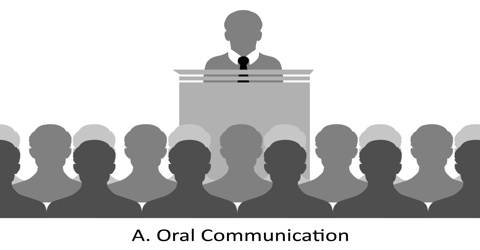Guidelines / Principles of Oral Communication
To make oral communication successful, communicators should follow some basic principles or guidelines. The principles to be followed in oral communication are as follows:
Taking preparation: The communicator or speaker should take necessary preparation prior to delivering the speech. Here preparation includes thinking, analyzing and planning the message to be delivered. Delivery of the same message by two different persons may differ depending on their preparation.
Preparing a draft of the speech: To make the speech attractive, the speaker should make a draft copy of the speech. By editing the draft, a well-organized message can be developed. Moreover, the speaker can practice the draft copy at home.
Using simple words: In oral communication, the speaker should use simple and familiar words. Moreover, same words should be used throughout the speech to convey the same meaning. Simple and familiar words can easily attract the interest of the listeners. Such words also help to avoid confusion.
Clear pronunciation: The success or effectiveness of oral communication mostly depends on clear pronunciation of words by the speaker.
Using visual aids: In order to make the presentation attractive, oral message can be supported by visual aids. Visual slides make the speech livelier and interesting.
Communicating with body language: The communicator should establish a relationship with the audiences through body language such as eye contact, smile etc. This helps the audiences to pay close attention to the speaker’s message.
Maintaining logical consistency: The speech of the communicator should be logical and consistent with the subject. Logical consistency of message can be maintained by narrating the events in a sequential way.
Emphasizing on important topic: In oral communication, due importance should be given on main theme of the message. The communicator should determine the relative importance of each part of his speech.
Speaking Slowly: Slow speaking is very crucial for clear understating of the message by the listeners. If the speaker speaks very rapidly, the listeners may fall to follow him. For making the message understandable to the audience, the speaker can pause frequently.
Repeating key words: If the audiences are less familiar with the words, the speaker should repeat the key words more than once. This helps the audiences to understand the message clearly.















